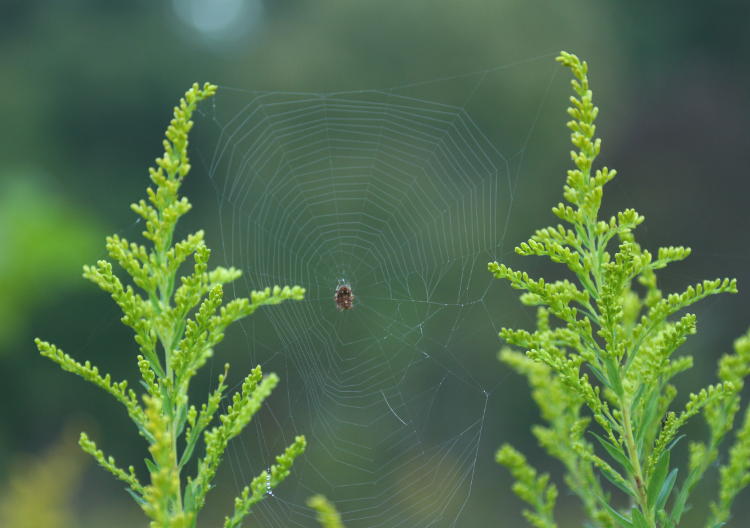
We now return to Mason Farm Biological Reserve, only not really because all these photos were taken during one visit that’s already days past now, so all we’re doing is seeing more photos – vacation slides from your creepy neighbor. And as the name implies (well, outright announces,) it’s gonna be spider heavy.
Part of this is because, late in the season and with chilly nights, there really isn’t a lot else active at the moment, especially not first thing in the morning. Truth be told, the spiders weren’t very active either, but the morning mist and dew certainly highlighted how damn many webs there were. Like another example of what appears to be the same species in the teaser from the previous Mason Farm post.
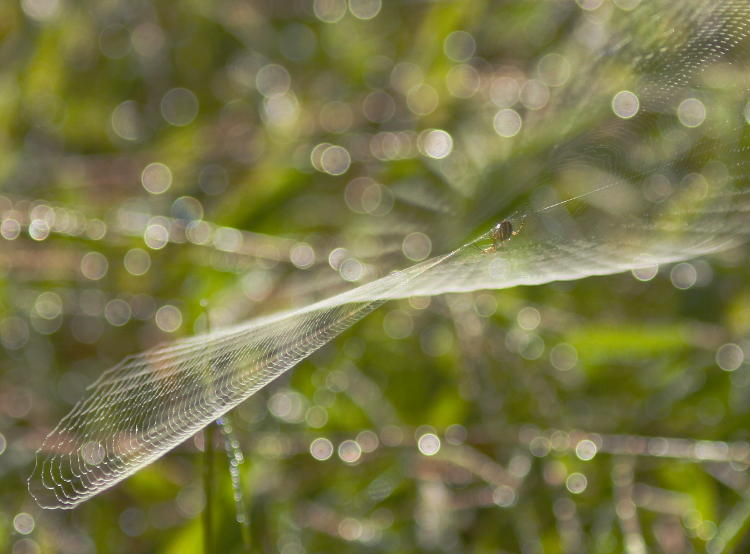
Many years back, I’d done photographs of twisted, horizontal orb webs like the one seen here, and suspected the same species, but in comparing them, the markings aren’t similar at all, so my vote is no. And none of them were in such a position to allow me detailed shots, because they were in thickets of dense, tall weeds, soaking wet with dew, that almost certainly would have been disturbed with any attempt at approaching them. Plus I wasn’t all that motivated anyway. We’re still being slightly fartsy here.

This one, however, I can identify – this is Hortense. Hortense is a banded argiope (Argiope trifasciata,) large and rude because, like the black-and-yellow argiopes, she builds her webs at roughly waist height, meaning they’re often discovered right before you walk through them. And at half a meter in span, this isn’t something you brush away easily. Hortense herself was roughly 40mm in body length, so much larger counting the legs (8,) and busy with her meal, so I tried to use the light on the web as best I could from the best angle I could get. I could have sworn I’d featured one of these here before, but the species names didn’t exist in the tag list, so maybe not.
The abundant goldenrod plants played host to numerous spiders and a few other arthropods.
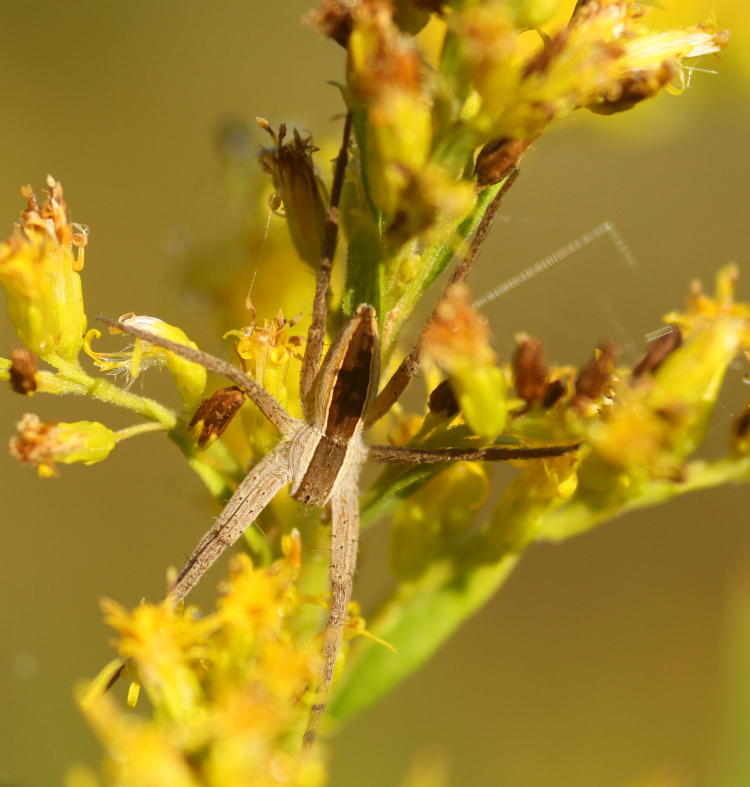
The most that I’m going to identify this one as is a nursery web spider, genus Pisaurina, because I didn’t get enough details to pin down exact species – I didn’t even get close enough to distinguish male from female. The sun had risen high enough to brightly illuminate it, but also cast a slightly distracting shadow across the abdomen. Ah well.
The next came a little earlier from a more tree-shrouded field, so it’s more muted, but a better pic.
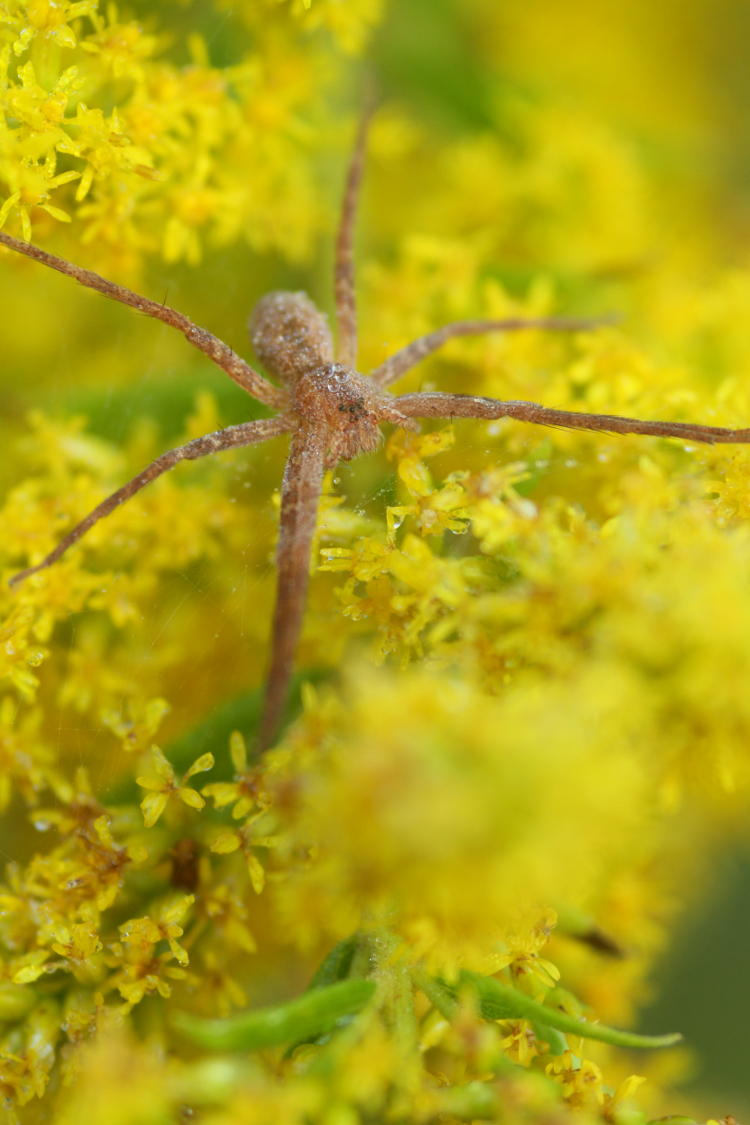
Another nursery web, hanging out before the dew had cleared, which added some nice elements to the photos. Especially when we go in for a cropped closeup.
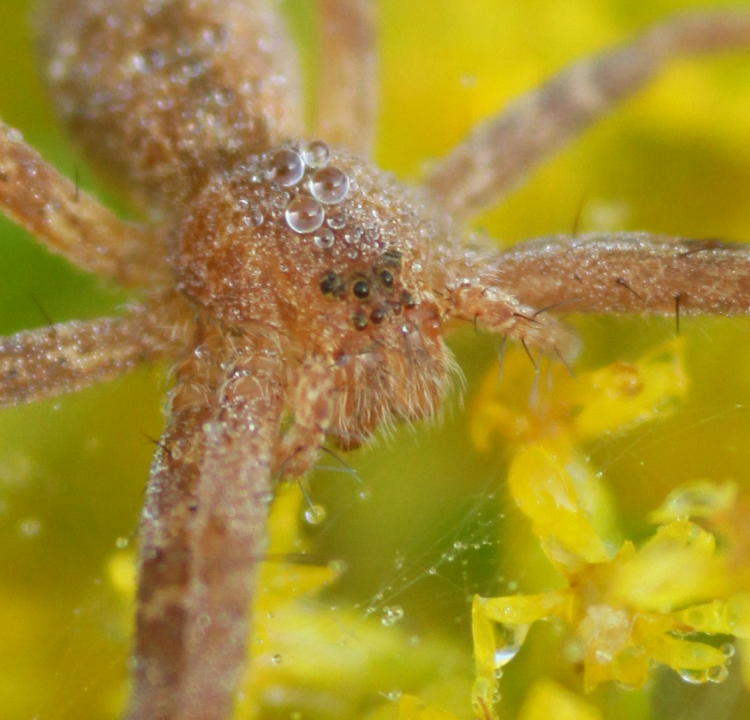
Isn’t that dew great? I know I like it at least; your taste may vary.
And that straight bottom row of eyes pins this down as a Pisaurina mira, because the other species in the area all have a curved bottom row. Little lesson for you: when you spot a nursery web spider, try to see the eyes clearly.
Which might be a little challenging, given that the spider may average 4mm in body width and often faces head down, so better to call in a professional. My rates are reasonable.
On another stand of goldenrod, the feathery tops being twisted over and clumped together told me to take a closer look, and this time the flash was necessary.
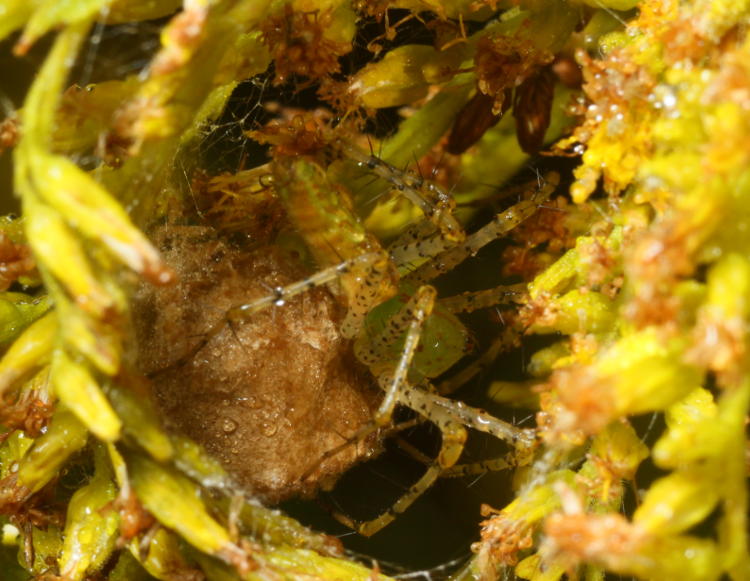
I’d been expecting to see more of these than I did, but I’d also been expecting to see more praying mantises too, so we see how strong my powers of prediction are. I know it’s not easy to make out down there, but this is a green lynx spider (Peucetia viridans) snuggled in with her egg sac. Her head is down and to the right, facing slightly away from us, while her abdomen, almost centered in the frame, blends in so well with the goldenrod that it’s nearly indistinguishable. If she hadn’t given herself away with the unnatural clumpiness of her webbed-together lair, she would have been extremely easy to miss. Right, Buggato?
And I did say that it wouldn’t be all spiders, you’re correct. Let’s see, what do we have here?

This carpenter bee – or perhaps bumblebee, I’m not bothering to look it up – was almost perfectly motionless, definitely not at all fired up about the morning, at least until it got warmer out there. None of my subjects here were likely to die of thirst, that was certain. Maybe one day I’ll do a time-lapse of something like this in the morning where we can watch the dew evaporate away – that might be cool.
All of these, the previous post and this, were taken around the open field portion of the farm, with one exception in earlier post (the mushrooms.) Because there wasn’t a lot to see in the portion that ran along a small feeder creek, but as our time was coming to an end, we (well, I) found two subjects in quick succession. The first I’d almost mistaken for something else, given how far it was stretched out of the water initially.
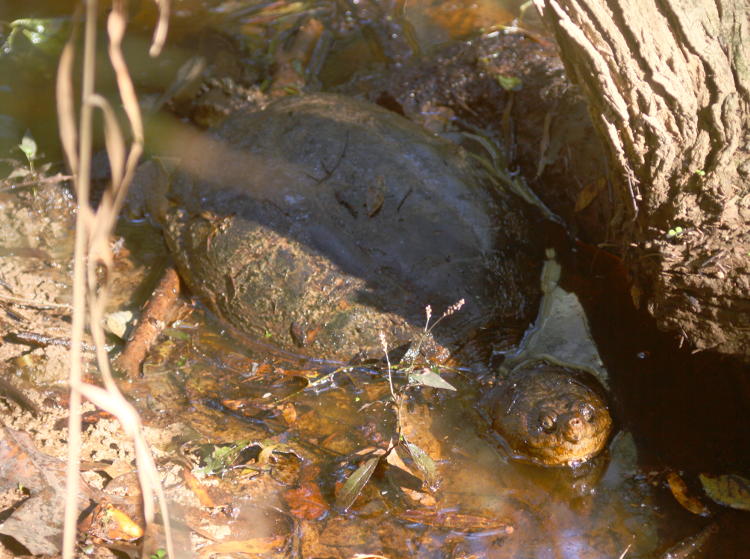
This common snapping turtle (Chelydra serpentina) was clambering over an exposed log when I spotted it, half hidden behind the edge weeds, and I’d suspected a beaver, but it settled down more like a turtle by the time I maneuvered around for a clear shot. In carapace length it was at least 35cm, so not a small specimen. Tucked in among the logs, it had no easy retreat, and so it viewed us stoically and wished for us to go away. Which worked, eventually, so maybe someone should look into the telekinetic powers of turtles. I mean, why not?
And just a little further on, I got a peek of something not quite right under some leaves, and bent down for a closer look. In science fiction movies this is a bad idea, but for nature photographers it should be a routine habit.
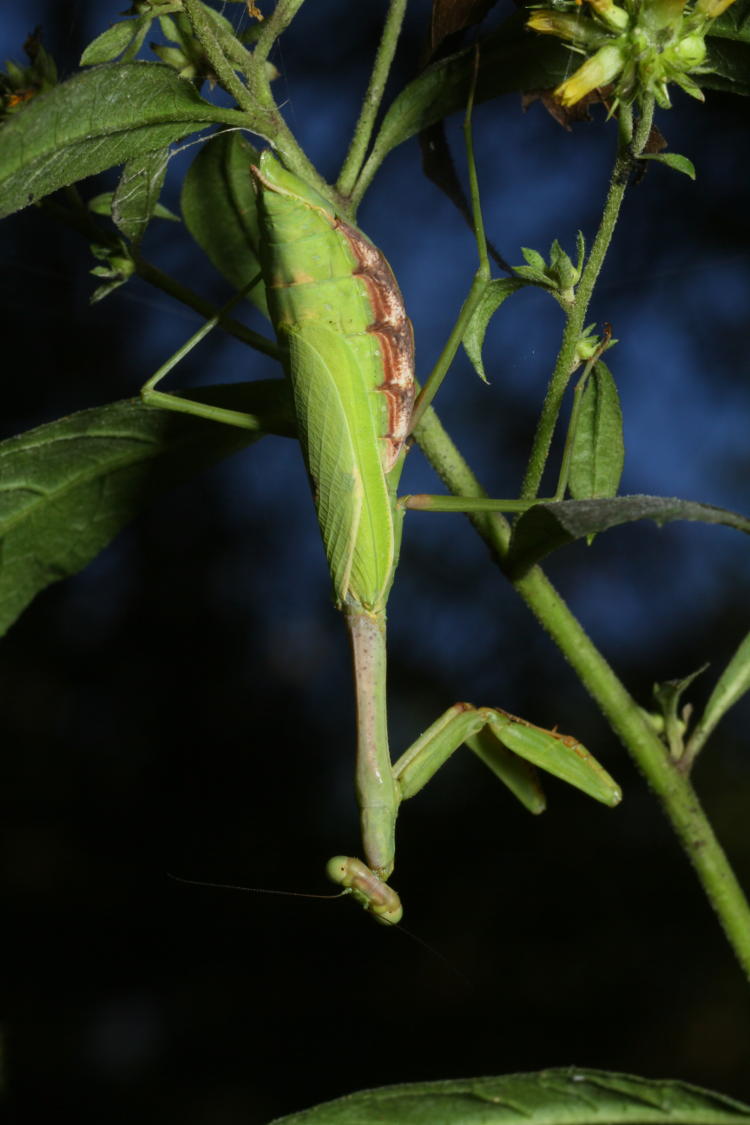
This Carolina mantis (Stagmomantis carolina) looked to be in her fifth trimester, ready to deposit an egg sac any second, but I knew this might take hours and may not even occur if she noticed us and felt threatened, plus we were at the end of our session, so while the opportunity to finally get photos of this was there, I really couldn’t take advantage of it. So much for dedicated nature photographer. But as I’ve said, let me know how much you’d pay to see that and we’ll make some arrangements – I can always work some flexibility (the key word there being, “work,” and not, “obsessive hobby.”)
So that’s it for the Mason Farm photos, except it’s not – we’ll see more before the month is out. But that’s enough for this post at least.




















































